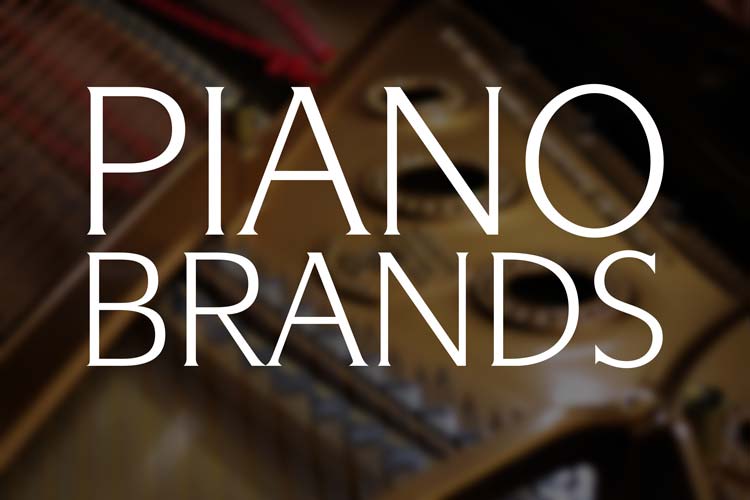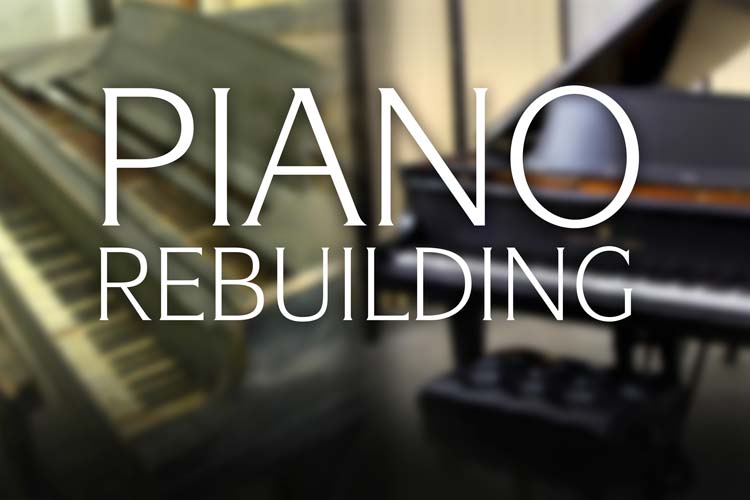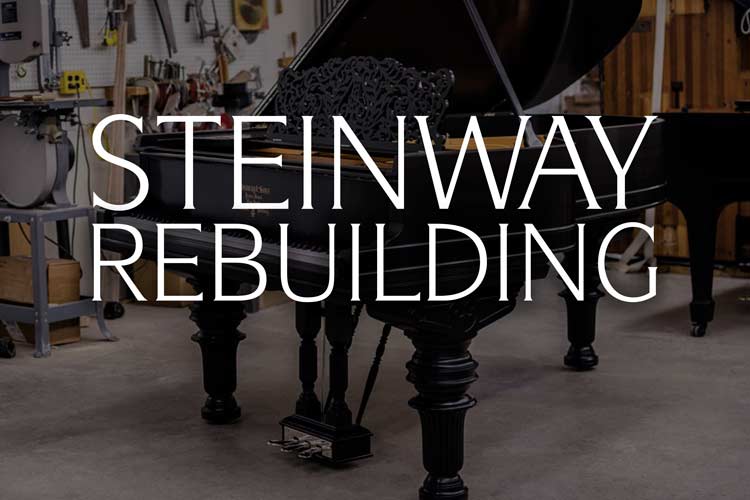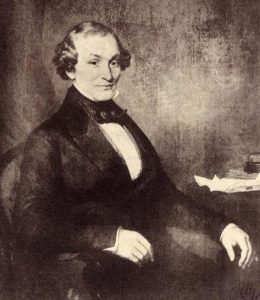Chickering & Sons | One of the First of the Titans
The Steinway Connection
In September of 1850 famed Swedish opera singer Johanna ‘Jenny’ Lind embarked on a nationwide tour of the United States at the invitation of showman P.T. Barnum. This tour consisted of an impressive 93 performances. In need of an instrument, Barnum contacted the Chickering & Sons Piano Company to construct a custom grand piano to accompany the singer on her nationwide tour.
The concert series opened in Boston to rave reviews. Attending the opening night in New York was a German piano maker by the name of Henry E. Steinweg. [Later changed to Steinway.] Seeking to establish his own business in his newly adopted country, Henry was incredibly fascinated by the custom Chickering grand and it was said that he had to be finally hauled away from the piano so that the concert could start. Henry Steinway would of course go on to found his own piano company, Steinway & Sons just a few years later.
The Founding of Chickering & Sons Pianos
The Chickering & Sons piano company was founded in the year 1823 in Boston, Massachusetts by craftsman Jonas Chickering and his first business partner, James Stewart. Jonas Chickering’s initial experience was in cabinet making and he apprenticed for three years with master cabinet maker John Osborn. This is where he met Osborn’s partner and his later business associate, James Stewart.
The Chickering company’s first year in business resulted in 15 pianos produced. The initial partnership with Stewart did not last long and after four years they dissolved their business connections. This left Chickering as the sole owner of the small piano manufacturing business.
Chickering built a new five-story piano factory along with a small concert venue on Washington Street in Boston. His new partner at that time was John Mackay, however that partnership did not last long either as Mackay was lost at sea in early 1841. The outgoing and aggressive Mackay was a sea captain and he would assist in the export of the pianos and would return with rare rosewood and figured mahogany for use in Chickering’s piano building.
Tragedy struck in 1852 when the Washington street factory burned to the ground. Numerous tools, patterns, and a prototype for a new type of Grand Piano were all lost. Chickering quickly attempted to rebound and began construction of a new, state-of-the-art factory – one he would not live to see completed. Jonas Chickering died on December 8th, 1853 leaving behind a legacy of quality, innovation, and over 12,000 pianos built.
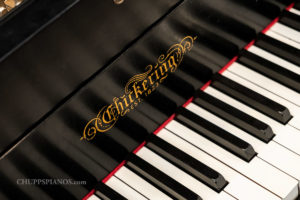 Pioneering Innovation
Pioneering Innovation
Chickering was the first to introduce practical, one-piece, cast iron plates in pianos. This idea is still utilized today and its introduction allowed for greater string tension and much higher stability. His pianos were also among the first to be overstrung. It is clear that their ability to innovate and advance during the early days of the piano industry contributed much to their growth and market dominance. During the golden age of piano manufacturing, it was a constant battle between companies, with constant invention and creation required to stay afloat. Chickering pianos were built under several names, as Jonas Chickering had multiple business partners. Stewart & Chickering, Chickering & Mackeys, and Chickering & Sons were all titles to grace the various piano’s fallboards.
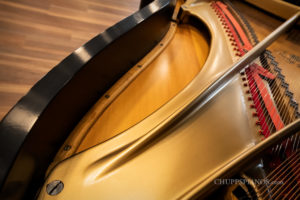 Continued Industry Sucess
Continued Industry Sucess
The Chickering piano company continued to have great success in the industry and during the middle portion of the 19th century was the larger piano maker in the United States. They were later surpassed by the man who first admired Chickering’s craftsmanship years before, as Henry Steinway’s company grew to become the predominant piano builder in the world. The Chickering & Sons company was taken over by Jonas’ sons after his death.
Like many makers, the Chickering brand was bought by the American Piano Company in 1908 and later part of Aeolian when AMPICO and Aeolian merged. In 1927 the Boston factory was closed and operations were moved to East Rochester, New York. Wurlitzer and Baldwin also manufactured pianos utilizing the Chickering brand. These pianos were built overseas and bear little resemblance to the historic Chickering pianos. Baldwin’s Chickering line was discontinued in 2008 as Baldwin themselves began to fold.
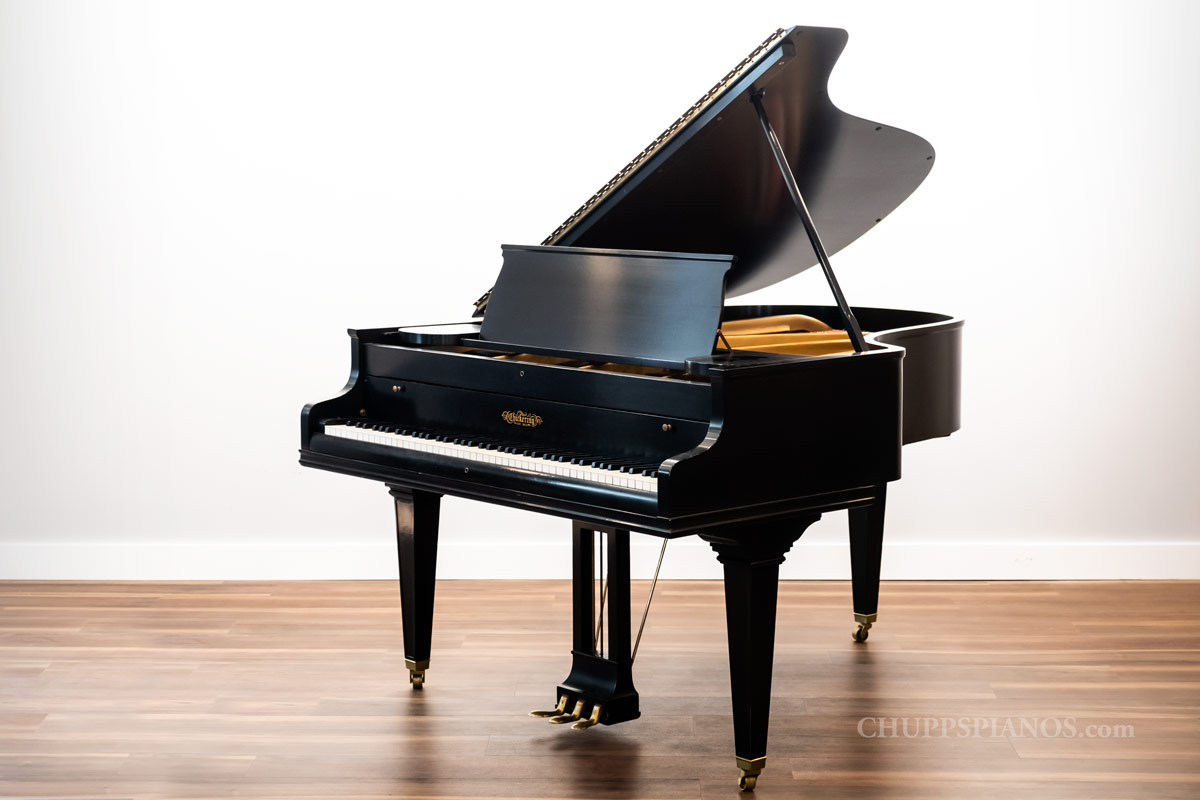 Chickering & Sons Pianos Today
Chickering & Sons Pianos Today
Jonas Chickering and his company were one of the key pioneers in the field of piano development. Jonas is credited with helping to craft the first single-piece cast iron piano plates and helped organize the construction of the Boston Music Hall. Historic, ‘golden era’ Chickering pianos have become favorites of many accomplished musicians.
Legendary artist Glenn Gould adored his 1895 Chickering & Sons Grand Piano and often pointed to it as one of his ideal pianos. Today, Chickering pianos are still well-loved by many. We have rebuilt a number of these pianos over our forty years in business.
If you have a Chickering piano you want us to take a look at, give us a call and contact us today!


